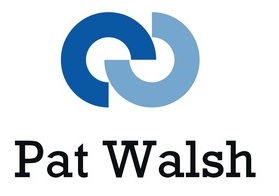CMS Overview
A CMS allows the easy publishing of content to the web, where content is key rather than HTML skills.
Normally, themes and templates are used to keep content standardised across the website and these can be managed within the admin system of the CMS.
Content can usually be added by anyone with relevant access to the sytem, ranging from a tech-savvy article writer to a tech-adverse author.
This CMS roundup covers some of the main options available.
Some of these options allow for both a hosted version (where the CMS and website is hosted by an external website) and an installed version (where your own website or web hosting account is used to run the CMS)
CMS Roundup
WordPress
According to stats on WordPress.com, there are over 70 million WordPress sites in the world.
WordPress has gone from a blogging platform, to a fully self-contained CMS, available as both a hosted version (at wordpress.com) and installed version (via wordpress.org)
There are a wealth of WordPress themes and plugins available, which allow you to make your site look as customised as you require. Also, over the last few years, many Responsive themes have been developed, which allow your WordPress site to work on mobile devices, such as smartphones and tablets, without any extra work on your part.
This website uses WordPress and the Avada theme, both of which I highly recommend.
Available since: 2003
URLs:
Hosted version www.wordpress.com
Installed version www.wordpress.org
Joomla
Joomla is thought to be the second most used CMS after WordPress. It operates in a similar manner and is also an open-source CMS, like WordPress. Unlike WordPress, Joomla started as a CMS rather than a blogging tool.
Available since: 2005
URLs:
www.joomla.org
Drupal
Drupal describes itself a little differently to WordPress and Joomla, as a content management platform. It’s also open-source, as are WordPress and Joomla.
Available since: 2001
URLs:
drupal.org
Squarespace
Squarespace is an online CMS, where you can host your own paid Squarespace site. It seems particularly geared towards design and portfolio type websites, with lots of image-based templates and cool, clean example sites.
Available since: 2007
URLs:
http://www.squarespace.com
Review – http://www.websitebuilderexpert.com/squarespace-review/
e-commerce CMS
Magento
Magento is an e-commerce platform, often thought of as the e-commerce version of WordPress, working along the lines of a CMS. There are several versions available, including hosted versions (Magento go), downloadable open-source version (Magento Community Edition) and corporate version (Magento Enterprise Edition)
Magento is now part of eBay Inc.
Available since: 2008
URLs:
http://www.magentocommerce.com
Shopify
Shopify is a hosted e-commerce CMS. A broad choice of e-commerce templates allows users to quickly get their Shopify site up-and-running, also allowing users to build an entire website based around Shopify.
Available since: 2006
URLs:
http://www.shopify.com/
Review: http://stylefactoryproductions.com/blog/2013/6/15/shopify-review#.UjNHL8asgk0
CMS for non-profits
Bellstrike
Bellstrike is an online CMS, exclusively for charities and non-profit-organisations. They provide sites on a free basis, but take a percentage of donations and also a fee per credit card transaction goes to their payment processor.
Available since: 2009
URLs: http://bellstrike.com
Thanks to Patrick McNeil, author of ‘The Web Designer’s Idea Book – Volume 3‘, whose book introduced me to some new CMS I hadn’t considered before, plus many example CMS websites.



